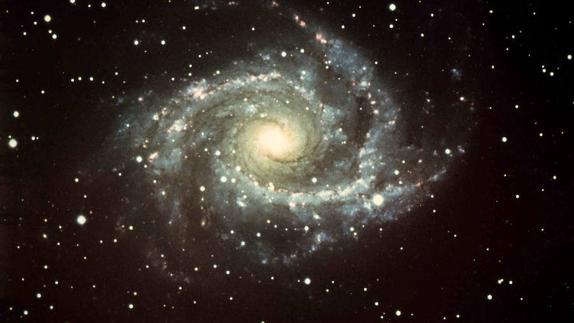

Sections
Highlight

KEN CAMPBELL
Friday, 10 November 2017, 09:51
Compartir
All the stars that you can see in the night sky are really quite close (in astronomical terms) and they are all contained in our galaxy, the Milky Way. The Milky Way is shaped like two fried eggs placed back to back with a central bulge in the middle and spiral arms of stars gradually getting thinner towards the edges. It is huge, about 180,000 light years across and containing around 400 billion stars. Our solar system is located in one of the spiral arms about three quarters of the way out from the centre.
It was believed that everything in the universe existed inside the Milky Way and that all the fuzzy blobs that could be seen with telescopes were also part of our galaxy. It was not until as recently as 1920 that astronomers realised that our galaxy is just one of many billions of other galaxies.
American astronomer Edwin Hubble took the first detailed photograph of what then was known as the Andromeda Nebula. He realised that it was not a nebula but was in fact a galaxy in its own right. A nebula is a cloud of gases, either the remnants of an exploding star or an area where stars are being created. Hubble observed other galaxies that had also been wrongly classified as nebulas and was able to calculate their distance. He also discovered that the galaxies were moving away from each other and that the universe was expanding. His proposal was that if the universe was expanding, then by rewinding time it stands to reason that all of the universe could be contracted back into a single entity and that the universe was created at the time of 'The Big Bang'. His discoveries were considered so important that the Hubble Space Telescope was named after him.
At this time of year the Andromeda Galaxy can be seen directly overhead. If you live in a very dark area it can easily be seen with the naked eye and is very clear in binoculars. At 2.5 million light years away it is the most distant object you can see without a telescope.
It is called the Andromeda Galaxy because it lies in the constellation of Andromeda. Find the constellation of Cassiopeia that looks like a W shape. Use the right-hand V of the W shape as an arrow pointing toward the galaxy. The Andromeda Galaxy is bigger than our own galaxy at around 220,000 light years across and containing about 800 billion stars. When you see the Andromeda Galaxy you are seeing it as it was 2.5 million years ago, even before there were humans on the Earth.
Publicidad
Publicidad
Publicidad
Publicidad
Reporta un error en esta noticia
Necesitas ser suscriptor para poder votar.